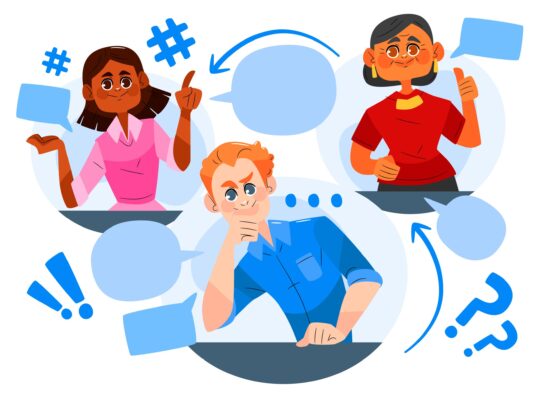| Communicating with Empathy | ||
| Instructor: Sharon Steed | ||
| Released: 2/9/2021 | Course Details 37m Beginner | |
| Skills Covered Interpersonal Communication Emotional Intelligence | Course Link | |
| Professional Certifications and Continuing Education Units (CEUs) Project Management Institute – PDUs: 1 hour | ||
Understanding Empathy
What is Empathy?
Empathy
The ability to understand and share the feelings of another.
Affective Empathy (Emotional Empathy)
Inherently reacting to another’s emotions. Giving someone a tissue when they are crying.
Cognitive Empathy (Perspective Taking)
Actively taking on another’s perspective. Attempting to feel what another feels.
Sympathy focuses on your perspective. Empathy focuses on the other person’s perspective.
Sympathy: “I’m sorry that you’re sad”
Empathy: “I understand why you’re sad and am here for you.”
Empathy is not an opportunity to make the conversation about you.
Empathy at work
Empathetic Company Values
- Trust
- Leaders set the example by speaking openly.
- Patience
- Patience means slowing down your response to judgment.
- Understanding
- Empathetic companies see the strengths of diverse teams.
The importance of professional empathy
Empathy at Work
- Improves collaboration – collaborative teams speak equally in meetings.
- Fosters strong relationships – takes empathy to build.
- Builds great leaders – leaders understand the strength and weaknesses of their employees.
Communicating with Empathy at Work
Laying the foundation for positive communication
Empathetic communication requires a solid foundation.
Practice Empathy
- Observe communication behaviors of others
- Is person A avoiding eye contact?
- How is person B reacting?
- Focus on listening
- Paraphrase
Benefits of asking others to share
- They’ll ask you to share too.
- They’ll be more likely to listen to you.
- They may incorporate your ideas into their plan.
Assess your coworker’s communication needs
Introvert Characteristics
- Prefer one-on-one interaction
- Sensitive to negativity
- Dislike small talk
- Like to problem-solve directly
Extrovert Characteristics
- Thrive in group settings
- Prefer talking through ideas
- Energized by human interaction
Ambivert Characteristics
- Enjoy conversation and solitude equally
- Easily engage in small talk
- Comfortable with different communication styles
Extroverts need to work through their thoughts aloud. Allow introverts time and space to be alone.
Speaking at Another’s Intellectual Level
- Accommodates the other’s mental processes
- Does not compromise your own image
- Customizes the message
Evaluate your personal communication style
Determine if your perceived communication style matches your actual communication style.
Formal Reviews
- Gather feedback on actual behaviors
- Provide the perspectives of direct reports
- Reveal communication blind spots
Take a coworker out for lunch and ask them how you can improve. Categorize the feedback.
Collect Behavioral Evidence
- Observe your communication
- Note behaviors mentioned in feedback
- Write down errors and record the causes
Approaching difficult conversations as a listener
As the listener, you must manage your emotions. Empathy means listening, even when you want to speak up.
Giving Others the Floor
- Promotes dialogue
- Provides information for problem-solving
Counter Defensiveness
- Stop
- Take a breath
- Focus on relaxing our muscles
Phrase Your Message
- Summarize the other person’s words
- Acknowledge the truth in their statement
- Be respectful
Approaching difficult conversations as a speaker
As the speaker, tone and preparation are key. Keep your emotions in check. Give others the benefit of the doubt. Scripts can make you seem rehearsed and detached.
Planning and Delivery
- Write down major points only
- Deliver points empathically
- Tailor your speech for the other person
Provide time and space to process the information. Reschedule meetings to let people calm down. Schedule meeting for the end of the day.
Keys to Success
- Comfortable mindset
- Confidence
- A focus on conversation
- Empathy
Empathy in groups
It’s difficult to empathize with people who are different from us. It’s natural to be cautious of unknown entities.
Become More Empathetic
- Acknowledge your old habits.
- Eliminate the group.
Start with one-on-one conversation before including the group.
 | Remember! To experience the full benefit of this guide, I highly recommend you watch the full training session. |






